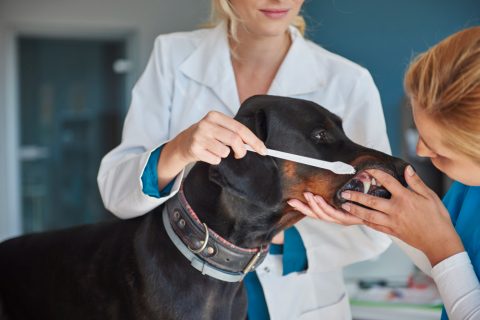Every dog owner knows that familiar sound of their pet’s normal breathing—steady, quiet, and effortless. But when that peaceful rhythm changes to labored wheezing, it can be genuinely alarming. Unlike humans who might wheeze from exertion or temporary congestion, canine wheezing typically signals an underlying health concern that deserves immediate attention.
Recognizing the difference between normal panting after exercise and concerning respiratory distress is crucial for every pet parent. When your furry companion struggles to breathe normally, understanding the potential causes can help you respond appropriately and seek timely veterinary care.
Contents
Identifying the Root Causes of Canine Respiratory Distress
Infectious Respiratory Conditions
Canine Infectious Tracheobronchitis (Kennel Cough)
This highly contagious respiratory infection ranks among the most frequent culprits behind unusual breathing sounds in dogs. While the name suggests it only affects dogs in boarding facilities, any unvaccinated canine can contract this illness through contact with infected animals in parks, training classes, or grooming facilities.
The hallmark symptom remains that distinctive honking cough, but many dogs also develop secondary wheezing as the infection progresses. You might notice your dog producing a dry, hacking sound followed by gagging or retching, especially after physical activity or excitement.
Environmental and Allergic Reactions
Environmental allergens can trigger significant respiratory distress in sensitive dogs. Seasonal pollens, dust mites, mold spores, and even certain cleaning products can cause inflammation in your dog’s airways, leading to wheezing episodes.
Unlike human allergies that often manifest as sneezing and watery eyes, canine allergic reactions frequently target the respiratory system directly. Dogs with environmental sensitivities may experience recurring wheezing episodes that coincide with specific seasons or after exposure to particular triggers.
Parasitic Infections
Heartworm Disease
This serious parasitic infection deserves special attention due to its potentially fatal consequences. Transmitted through mosquito bites, heartworms establish themselves in the heart and pulmonary arteries, gradually compromising cardiovascular function.
Early stages rarely produce noticeable symptoms, but as the worm burden increases, affected dogs begin showing signs of respiratory compromise. The wheezing typically develops alongside persistent coughing, reduced exercise tolerance, and gradual weight loss. Without prompt treatment, heartworm disease can cause irreversible damage to the heart and lungs.
Mechanical Obstructions
Foreign Object Aspiration
Perhaps the most immediately dangerous cause of sudden wheezing involves inhaled foreign objects. Dogs explore their world through their mouths, making them susceptible to accidentally inhaling small toys, food particles, or outdoor debris.
When an object becomes lodged in the airway, the resulting wheezing often appears suddenly and dramatically. Affected dogs typically show obvious signs of distress, including pawing at their face, excessive drooling, and panic-like behavior. This scenario constitutes a true emergency requiring immediate veterinary intervention.
Structural Abnormalities
Tracheal Collapse
Certain breeds, particularly smaller dogs like Chihuahuas, Pomeranians, and Yorkshire Terriers, have genetic predispositions to tracheal weakness. Over time, the cartilage rings supporting the windpipe can soften and collapse, creating breathing difficulties.
Dogs with collapsing trachea often produce a characteristic “goose honk” sound, especially during excitement, exercise, or when pressure is applied to the neck area. The condition typically worsens with age and may require ongoing management to maintain quality of life.
Neoplastic Growths
Nasal and Respiratory Tumors
While less common than other causes, both benign and malignant tumors can develop within the nasal passages or respiratory tract. These growths can obstruct normal airflow, leading to wheezing and other breathing difficulties.
Nasal tumors often produce additional symptoms like bloody discharge, facial swelling, or loss of appetite. Early detection significantly improves treatment outcomes, making regular veterinary examinations essential for older dogs or those at higher risk.
Emergency Situations and When to Act Quickly
Recognizing Critical Symptoms
Certain combinations of symptoms indicate emergency situations requiring immediate veterinary attention. If your dog exhibits wheezing alongside blue-tinged gums, extreme lethargy, or obvious breathing distress, time becomes critical.
Dogs showing signs of foreign object aspiration—sudden onset wheezing, gagging, pawing at the mouth, or inability to bark normally—need emergency care within minutes, not hours. These situations can rapidly progress to complete airway obstruction.
Choosing Between Urgent Care and Emergency Services
Not every wheezing episode requires emergency room visits, but distinguishing between urgent and critical situations can be challenging. Mild wheezing that develops gradually over days might warrant a same-day appointment with your regular veterinarian, while sudden, severe respiratory distress demands immediate emergency care.
Consider the overall picture: a dog who continues eating, playing, and maintaining normal energy levels alongside mild wheezing might safely wait for regular veterinary hours. However, any dog showing signs of distress, behavioral changes, or worsening symptoms should receive immediate attention.

Diagnostic Approaches and Treatment Options
Veterinary Evaluation Process
When you bring a wheezing dog to the veterinarian, expect a comprehensive examination focusing on the respiratory system. Your veterinarian will likely listen to the heart and lungs, examine the throat and nasal passages, and assess overall breathing patterns.
Diagnostic tools may include chest X-rays to evaluate lung and heart structures, blood tests to check for infections or other systemic issues, and specialized procedures like endoscopy if foreign object aspiration is suspected.
Treatment Variations by Cause
Treatment approaches vary significantly depending on the underlying cause. Infectious conditions like kennel cough often respond well to supportive care and sometimes antibiotics, while allergic reactions may require antihistamines or steroids to reduce inflammation.
Heartworm disease requires specialized treatment protocols that must be carefully managed by experienced veterinarians. Structural problems like tracheal collapse might need ongoing medication management or, in severe cases, surgical intervention.
Prevention and Long-term Management
Reducing Risk Factors
Many causes of canine wheezing can be prevented through proper preventive care. Maintaining current vaccinations helps protect against infectious respiratory diseases, while regular heartworm prevention eliminates the risk of this serious parasitic infection.
For dogs with environmental allergies, working with your veterinarian to identify specific triggers and develop management strategies can significantly reduce wheezing episodes. This might include dietary changes, environmental modifications, or preventive medications during high-risk seasons.
Ongoing Monitoring and Care
Dogs with chronic conditions causing wheezing require ongoing veterinary supervision to monitor progression and adjust treatments as needed. Regular check-ups help ensure that management strategies remain effective and that any changes in condition are addressed promptly.
Creating a home environment that supports respiratory health—maintaining clean air, avoiding strong fragrances, and ensuring proper humidity levels—can help minimize wheezing episodes in sensitive dogs.
When to Contact Your Veterinarian
Trust your instincts as a pet parent. If your dog’s breathing patterns change noticeably, don’t hesitate to seek professional guidance. Early intervention often leads to better outcomes and can prevent minor issues from developing into serious problems.
Remember that wheezing is never normal for dogs and always warrants veterinary attention, even if it seems mild. Your dog’s respiratory health is too important to risk delaying appropriate care.







